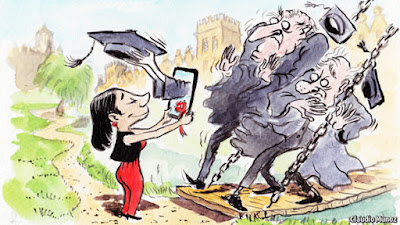Opportunities and challenges of open online courses
As a researcher, starting to give my first steps in online teaching, I felt the need to dig into the various types of online courses and how they work. Apparently, there are many different formats of online courses [1, 2], but the prevalent one is where you register as a student at a university to get access to a web-based platform where you can find lectures and other learning material, submit your assignments and contact and receive feedback from the teachers/other students. They could be either self-passed or have specific deadlines for tests and assignments [3].
Another format of web-based courses that are gaining popularity are the so-called MOOCs, short for Massive Open Online Courses. Today, MOOCs are reaching massive numbers of students. The first MOOC was launched in 2008 by Stephen Downes and George Siemens and it was called “Connectivism and Connective Knowledge” [4]. Their intention was to “exploit the possibility for interactions between a wide variety of participants (…) to provide a richer learning environment” [5]. 2300 students have signed in and 170 of them created their own blogs. The course was free and open, i.e. anyone could join, modify or remix the content without paying, although the possibility of getting a certification was offered upon payment of a fee [4]. In 2011, Peter Norvig and Sebastien Thrun from Stanford offered a course in “Introduction to Artificial Intelligence” that reached an initial enrollment of over 160 000 students from around the world and over 20 000 of them completed the course [5].
 |
| Figure 1. Web-based learning (Illustration by Scott Robertson) [6]. |
I personally find the idea of MOOCs revolutionary. It is beautiful to see how they enable people from different places and social background to have access to valuable knowledge. However, as a teacher, the idea of having my lectures out in the open in the digital world for everyone to see, use, comment and judge can be rather scary and intimidating. Other bloggers have also shown some concerns regarding MOOCs [7,8]. Some of the points raised were (i) teachers become nothing more than “glorified teaching assistants”, (ii) easy for students to drop out, (iii) intellectual property and financial details are issues [7].
I can understand that the change in the educational system towards web-based courses and MOOCs might be intimidating to the well-established traditional universities. However, I would like to remind the readers that it is not the first time there was fear that technology would end traditional education. As Mark Thoma explained [9], in medieval times when books were very expensive, the equivalent of college course was a lecturer reading a book to a group of people. When the Gutenberg press came, the widespread availability of books brought worries to the university leaders as more people could purchase a book and could read it themselves, and therefore “books had replaced the need for a Socrates to lecture in person”. Time have revealed us that this fear made absolutely no sense.
 |
| Figure 2. Online learning changing educational system [10] |
Humans have an inherent quality of resisting change in whatever form it presents to us. After reflecting on the subject, my opinion on web-based courses and in particular on MOOCS is that they have the potential to change the educational system in ways that we cannot imagine. So I will release my fears, embrace their development and allow time to show me the outcomes.
References: